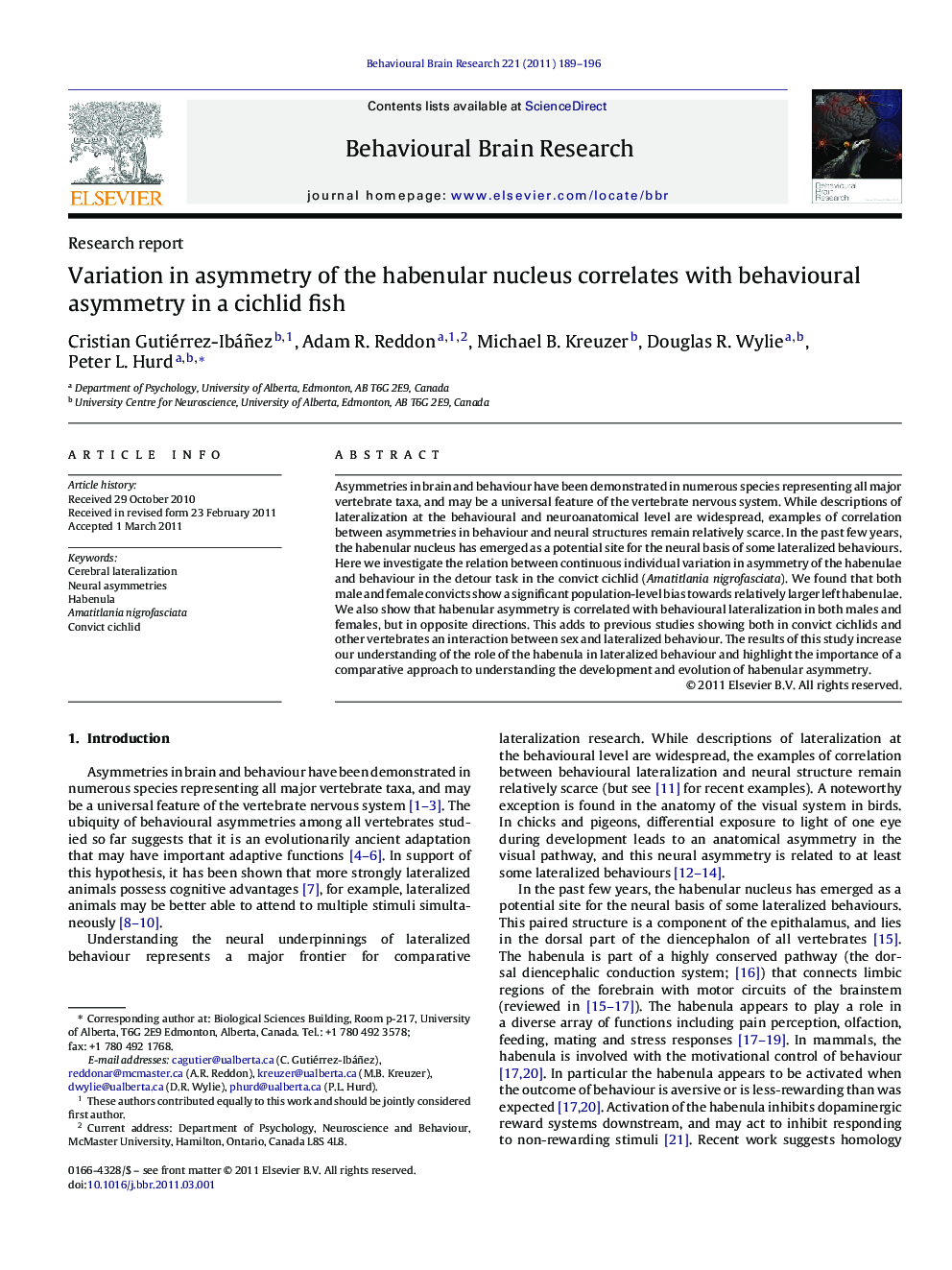| Article ID | Journal | Published Year | Pages | File Type |
|---|---|---|---|---|
| 4313691 | Behavioural Brain Research | 2011 | 8 Pages |
Asymmetries in brain and behaviour have been demonstrated in numerous species representing all major vertebrate taxa, and may be a universal feature of the vertebrate nervous system. While descriptions of lateralization at the behavioural and neuroanatomical level are widespread, examples of correlation between asymmetries in behaviour and neural structures remain relatively scarce. In the past few years, the habenular nucleus has emerged as a potential site for the neural basis of some lateralized behaviours. Here we investigate the relation between continuous individual variation in asymmetry of the habenulae and behaviour in the detour task in the convict cichlid (Amatitlania nigrofasciata). We found that both male and female convicts show a significant population-level bias towards relatively larger left habenulae. We also show that habenular asymmetry is correlated with behavioural lateralization in both males and females, but in opposite directions. This adds to previous studies showing both in convict cichlids and other vertebrates an interaction between sex and lateralized behaviour. The results of this study increase our understanding of the role of the habenula in lateralized behaviour and highlight the importance of a comparative approach to understanding the development and evolution of habenular asymmetry.
► The left habenula is larger than the right in most Convict cichlids. ► Sexes have different relationship between habenular asymmetry and lateralization. ► Males with more symmetrical habenulae biased to use right hemisphere to view space.
